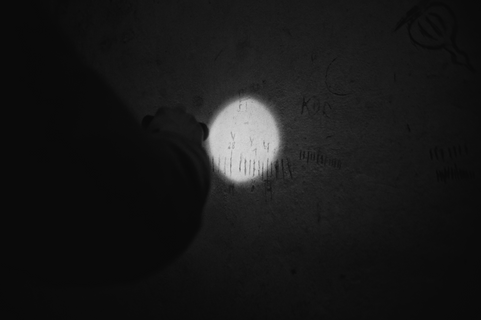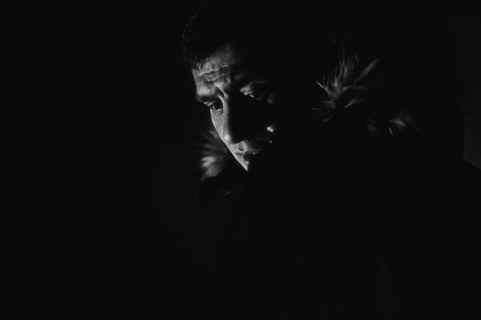
PHOTOGRAPHY
Tortured souls of Izyum, Ukraine - 2025
Directed by Louis Souvestre
Izyum, 2022: A Chronicle of Systematic Torture



Izyum, Kharkiv oblast in the Russo-Ukrainian war - occupation outline - September 14th 2022
Izyum is a city in eastern Ukraine’s Kharkiv region, near the edge of the Donbas. Before Russia’s full-scale invasion in 2022, it was home to around 45,000 people. The population was predominantly ethnic Ukrainian, though many residents spoke Russian as their first language, a common dynamic in eastern Ukraine. Despite the language, polls and elections consistently showed strong Ukrainian national identity and loyalty. In April 2022, Russian forces occupied the city, turning it into a key military hub and a site of systematic repression. When Ukrainian troops liberated Izyum in September 2022, they uncovered torture sites, mass graves, and evidence of widespread war crimes committed during the occupation.


When Ukrainian forces recaptured the city of Izyum in September 2022, they found more than rubble. Beneath the shell-damaged facades and burned-out buildings lay a deeper scar. One cut into the bodies and memories of hundreds of civilians. At the heart of this wound was the city’s police station.
In its basement, what was once a firing range had been turned into a torture chamber. The walls were lined with egg cartons and soundproofing material, designed not for comfort, but to muffle screams. It was here, Ukrainian investigators believe, that dozens of civilians were systematically tortured by Russian forces and their collaborators from the so-called Luhansk People's Republic.


Schibrya Leonid, a joyful and welcoming poet from Izyum, walked us through the ruins of the police station. Room by room, he recounted his experience with remarkable resilience. He spoke of his cellmate, a young, thin, exhausted man. After a few weeks, the man was taken away. Leonid never saw him again.
He still lives in Izyum. But writing poetry has become much harder.
The testimonies are chilling. One man was beaten and electrocuted for hours with wires connected to a Soviet-era field phone. Another had his arm deliberately broken after he refused to confess to helping the Ukrainian military. Some detainees were blindfolded and left for days without food or water, forced to sit in their own waste, stripped of clothing and dignity.
The abuse was not limited to a single location. According to international observers, at least ten different sites across Izyum were used as detention and torture centers, including kindergartens, clinics, and administrative buildings. In each, similar patterns emerged: arbitrary arrests, brutal interrogations, electric shocks, waterboarding, beatings, threats of rape or execution.


A UN fact-finding mission later reported that over 90% of the civilians it interviewed, who had been detained during the occupation, said they had been tortured. Many were seized with no formal charges. Their “crime” was often as simple as having a pro-Ukrainian opinion, owning a Ukrainian flag, or having a relative in the military.


Palamarchuk Yakov, a Russian-speaking former policeman from Izyum, was tortured and imprisoned for weeks, simply for being a law enforcement officer. His precise and consistent testimony helped Ukrainian authorities identify many of the Russian soldiers involved in the abuse. Some have died in the war. Others remain in the Russian army, despite concrete evidence of war crimes. Some were even promoted.
Yakov endures. He now lives in Kharkiv, where the Russian presence is still felt, in the scars on his body and in the sky above him, through daily bombings, shelling, and drone strikes.

Scars cover the body of Yakov. From burns, electricity shocks, whipping and cutting.

Prisonners spent weeks without seeing sunlight. With no way of knowing the date, or how long they spent locked up.

Bucket used by the prisonners. Sometimes for weeks before being emptied
What Ukrainian forces found outside the police station was just as harrowing. In the surrounding forests, investigators uncovered a mass burial site containing over 440 bodies. (Link to my coverage) Some were soldiers. Many were civilians, including women and children. Forensic analysis revealed signs of violent deaths: hands bound behind backs, ropes around necks, fractured skulls, shattered ribs, evidence of sexual violence like signs of rape and genital mutilations. Several of the bodies were booby-trapped with explosives.

PHOTOGRAPHY (work in progress)
MASS GRAVES AND SHAME, Ukraine - 2025
Directed by Louis Souvestre


Чёрный Русский (Black Russian) - Beer can left by Russian occupiers - Manufactured by Megapak Russia, Moscow region, Leninsky district, Vidnaya city.
Russia has denied responsibility, calling the reports fabrications. But the consistency of the witness accounts, the physical evidence, and the pattern of abuse already documented in other occupied territories has drawn international condemnation.
Human rights organizations and war crimes investigators say the methods used in Izyum suggest a deliberate, organized effort to instill fear and eliminate dissent.
Today, the city struggles to recover. The police station stands gutted, its basement a stark reminder of the months when law was replaced by terror. Survivors carry the trauma in silence, their testimonies forming the foundation of potential war crimes prosecutions. Investigations are ongoing.
What happened in Izyum was not chaos. It was method. It was not the collateral damage of war, it was policy by other means. And it has left behind a trail of suffering that cannot be buried.

.png)





















